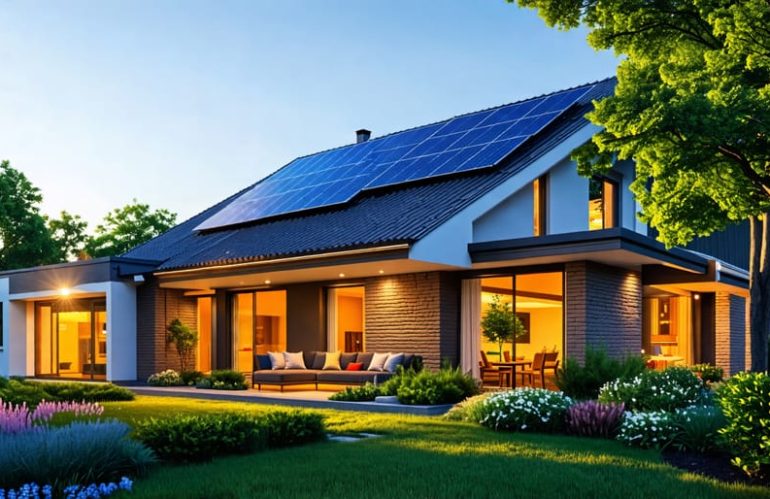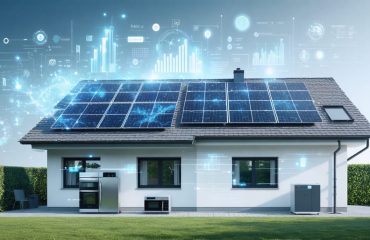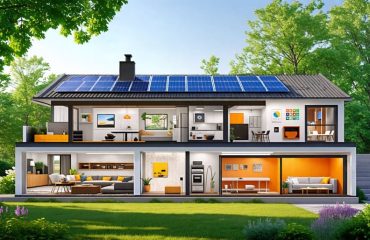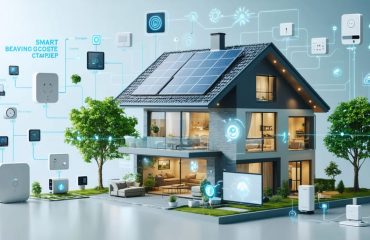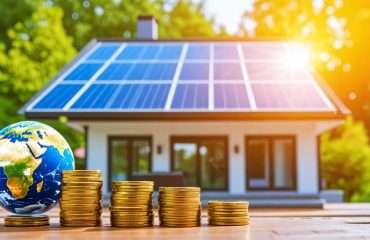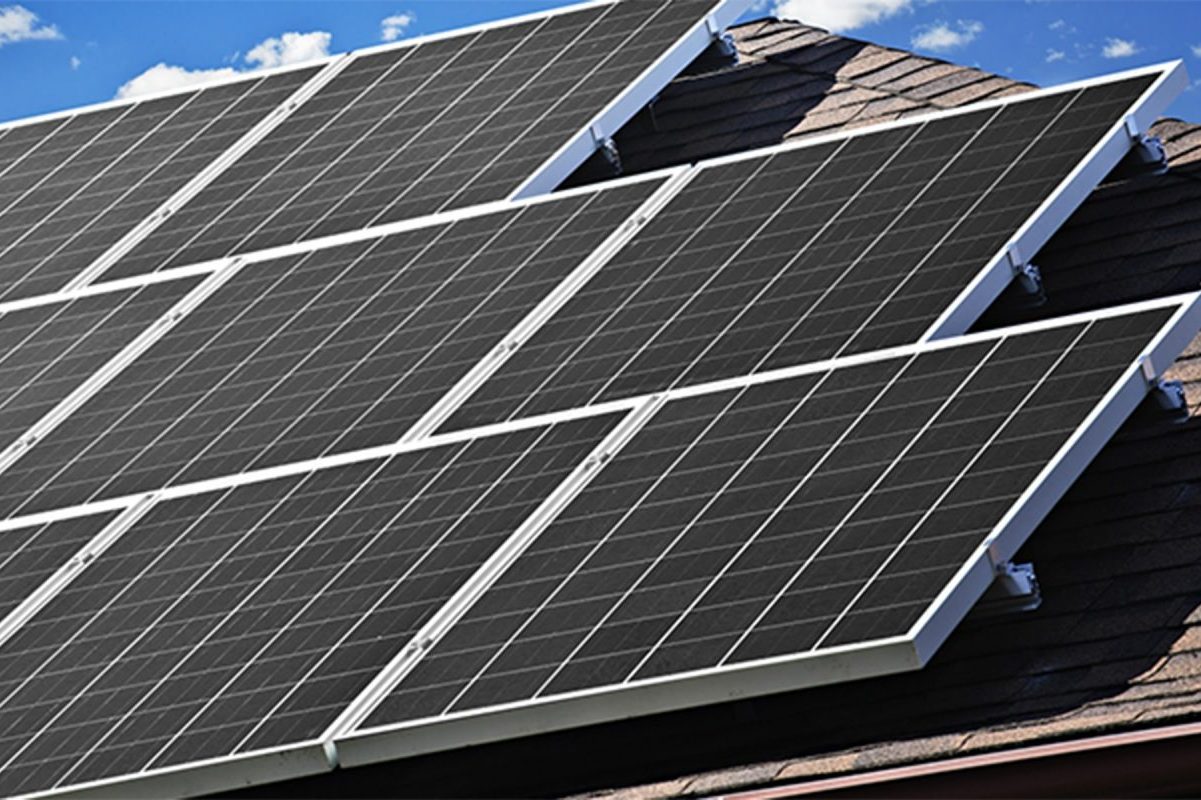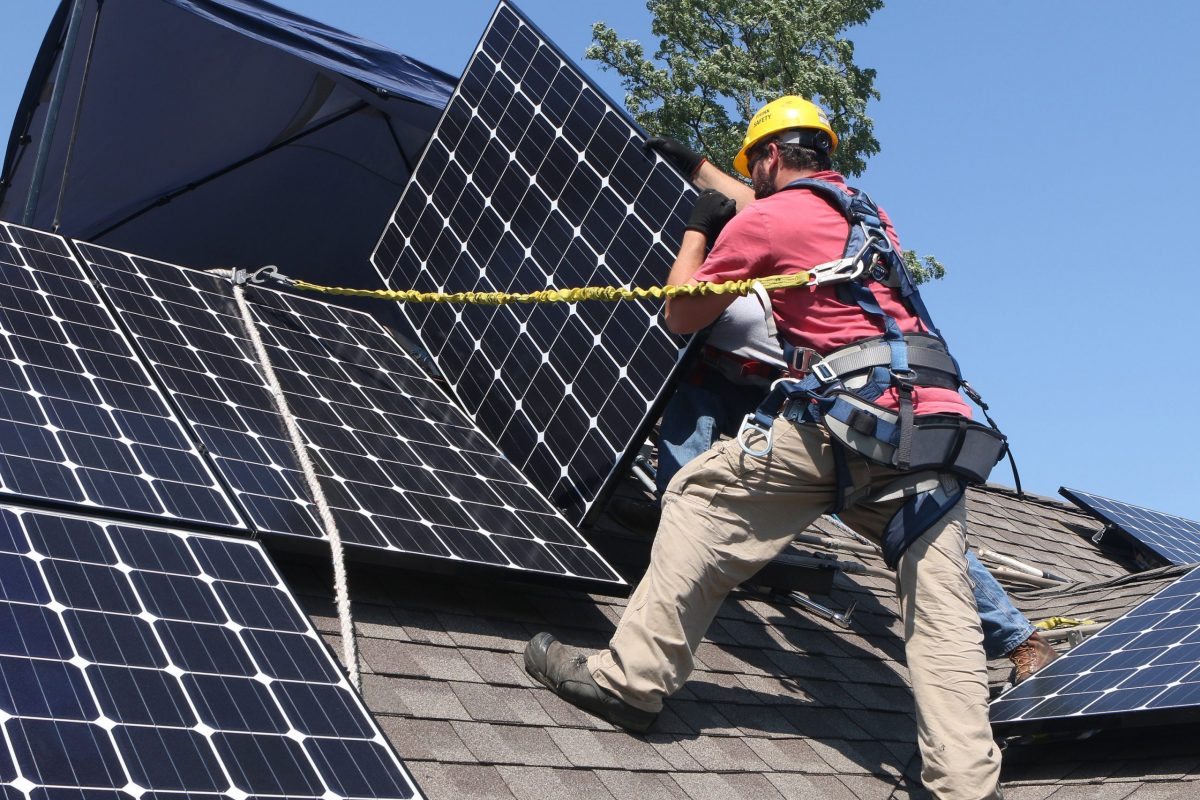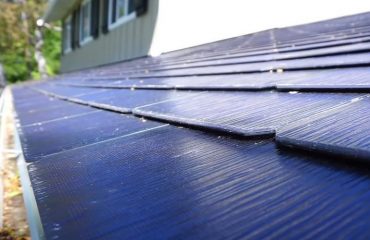Install solar panels to harness free, clean energy from the sun, reducing your reliance on the grid. Upgrade to Energy Star certified appliances, which use 10-50% less energy than standard models, saving you money on utility bills. Weatherize your home by sealing air leaks, adding insulation, and installing energy-efficient windows to minimize heat transfer and improve comfort. Switch to LED light bulbs, which last 25 times longer and use 75% less energy than incandescent bulbs, cutting lighting costs dramatically.
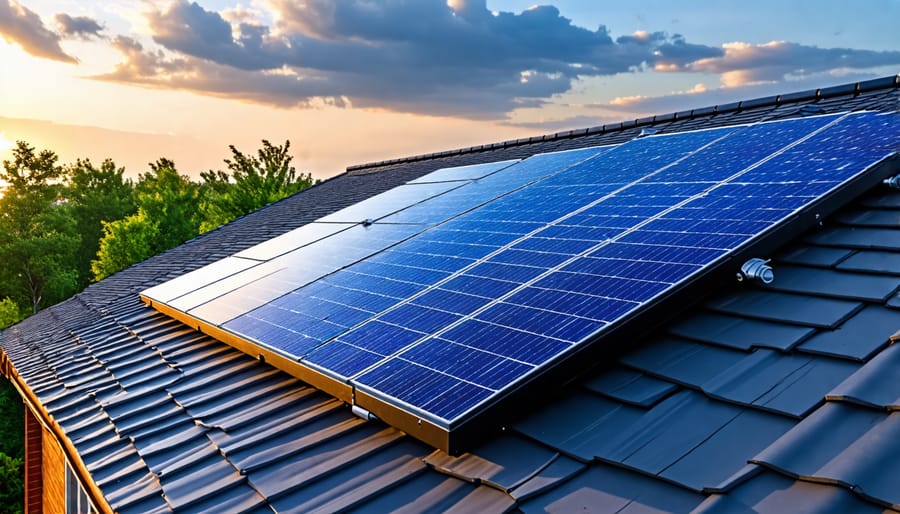
Solar Panels: Harvest Free Energy from the Sun
Debunking Common Solar Myths
Despite what you may have heard, solar energy is more accessible and affordable than ever. While initial installation costs were once a barrier, prices have dropped dramatically in recent years. In fact, the cost of solar has fallen by more than 70% over the last decade, making it a financially savvy choice for many homeowners. Concerns about reliability are also outdated – modern solar systems are designed to work efficiently even on cloudy days and can store excess energy for later use. Dispel misconceptions and embrace the truth: solar is a smart, accessible choice that can save you money and reduce your carbon footprint. With streamlined installation processes and user-friendly monitoring systems, going solar has never been easier. Don’t let outdated myths hold you back from enjoying the numerous benefits of this clean, renewable energy source. As technology continues to improve and costs decline further, there’s never been a better time to explore solar solutions for your home.
Smart Thermostats: Automate Comfort and Efficiency
Smart thermostats are revolutionizing home comfort and energy efficiency by learning your habits and preferences to optimize heating and cooling. These intelligent devices use advanced algorithms and sensors to understand when you’re home, away, or asleep, automatically adjusting temperatures to conserve energy without sacrificing comfort. Over time, smart thermostats become more accurate in predicting your needs, leading to significant energy savings.
Popular models like the Nest Learning Thermostat, ecobee SmartThermostat, and Honeywell T9 offer sleek designs, intuitive interfaces, and compatibility with smart home systems. They provide remote control via smartphone apps, allowing you to monitor and adjust settings from anywhere. Many models also offer geofencing, which uses your phone’s location to determine when you’re away and automatically switches to an energy-saving mode.
By reducing unnecessary heating and cooling, smart thermostats can save homeowners an average of 10-15% on their energy bills. For a typical household, this translates to annual savings of $131 to $145. Plus, many utility companies offer rebates and incentives for installing smart thermostats, making them an even more attractive investment.
Beyond the financial benefits, smart thermostats contribute to a greener home by minimizing energy waste. By optimizing HVAC usage, they reduce your carbon footprint and help conserve valuable resources. As an essential component of any eco-friendly home, smart thermostats prove that comfort and sustainability can go hand in hand.
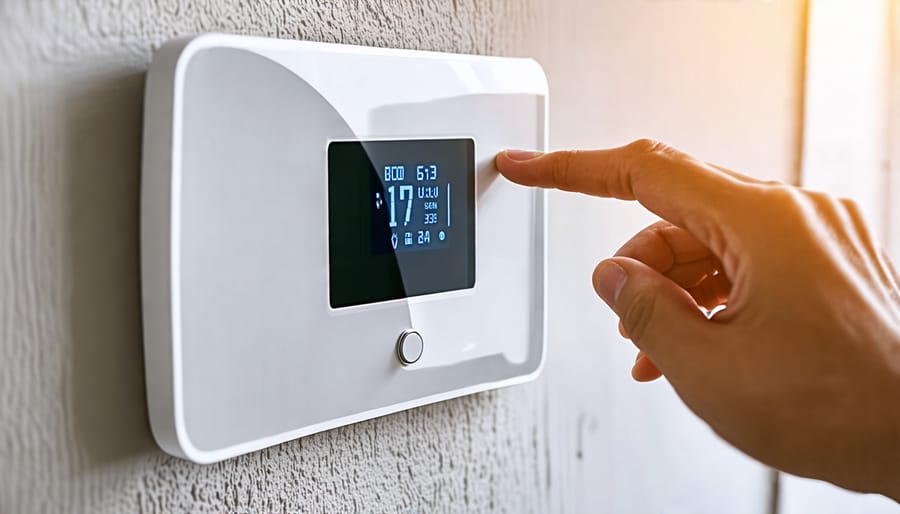
Energy-Efficient Appliances: Upgrading for the Future
When it comes to upgrading your home appliances, look for the Energy Star label. Energy Star certified appliances meet strict energy efficiency guidelines set by the US Environmental Protection Agency, using 10-50% less energy and water than standard models. This translates to significant savings on your utility bills over the appliance’s lifetime. For example, an Energy Star certified washing machine can save you $450 in operating costs compared to a non-certified model.
But the benefits go beyond your wallet. By reducing energy consumption, Energy Star appliances also help decrease greenhouse gas emissions and your overall carbon footprint. If every American home replaced just one appliance with an Energy Star model, we could collectively prevent 17 billion pounds of annual greenhouse gas emissions – equivalent to removing 1.6 million cars from the road.
When shopping for new appliances, prioritize those with the Energy Star label. While they may have a slightly higher upfront cost, the long-term energy and water savings more than make up for it. Plus, many utility companies offer rebates and incentives for purchasing Energy Star appliances, further offsetting the initial investment. Upgrading to energy-efficient appliances is a smart choice for both your budget and the environment.
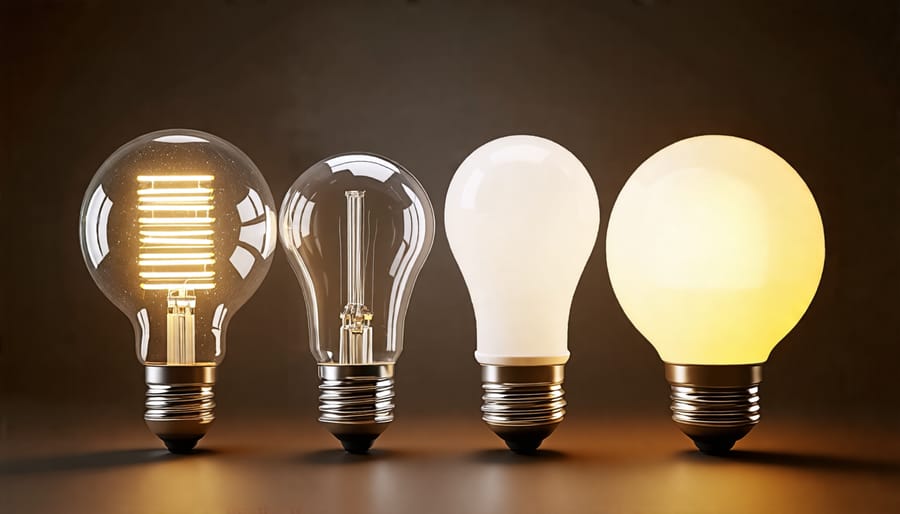
Insulation and Weatherization: Keep Comfort In, Waste Out
Insulating your home and sealing air leaks is one of the most effective ways to improve energy efficiency, reduce waste, and maintain a comfortable indoor environment. Proper insulation acts as a barrier, preventing heat from escaping during winter and keeping your home cool in summer. This not only enhances comfort but also reduces the strain on your heating and cooling systems, leading to lower energy bills and a smaller carbon footprint.
To maximize the benefits of insulation, it’s crucial to identify and eliminate drafts. Common areas for air leaks include windows, doors, electrical outlets, and plumbing penetrations. By sealing these gaps with weatherstripping, caulk, or foam sealant, you can significantly reduce energy loss and improve the overall performance of your insulation.
When selecting insulation materials, consider options with high R-values, which indicate better thermal resistance. Some eco-friendly choices include recycled denim, cellulose, and sheep’s wool. These materials not only provide excellent insulation properties but also contribute to a healthier indoor environment by minimizing the use of synthetic chemicals.
Proper insulation and air sealing lay the foundation for other energy-efficient upgrades in your home. For example, a well-insulated house requires less energy to maintain a comfortable temperature, allowing you to install a smaller, more efficient heating and cooling system. Additionally, insulation helps maintain consistent temperatures throughout your home, enabling you to take full advantage of zoned heating and cooling solutions.
By prioritizing insulation and weatherization, you can create a more comfortable, energy-efficient, and environmentally-friendly home while enjoying the added benefit of lower utility bills.
Lighting and Daylighting: Bright Ideas for Efficiency
LED light bulbs are a smart choice for energy-efficient lighting, using up to 90% less energy than traditional incandescent bulbs and lasting up to 25 times longer. Not only do they reduce your electricity bill, but they also come in a variety of colors and brightness levels to suit your home’s ambiance. Daylighting techniques, such as strategically placed windows and skylights, can further reduce your reliance on artificial lighting by harnessing the power of natural sunlight. This not only saves energy but also enhances your home’s aesthetic appeal and can boost your mood and productivity. By combining LED lighting with daylighting, you can create a comfortable, well-lit environment that is both eco-friendly and cost-effective. Embrace these bright ideas for efficiency and enjoy a more sustainable, inviting living space.
Water Conservation: Every Drop Counts
Water conservation is a crucial aspect of sustainable living, and every drop truly counts when it comes to preserving this precious resource. One of the easiest ways to reduce water consumption in your home is by installing low-flow fixtures, such as showerheads, faucets, and toilets. These fixtures can significantly cut down on water usage without compromising performance or comfort.
Another effective strategy for conserving water is to embrace native plant landscaping. By selecting plants that are naturally adapted to your local climate and soil conditions, you can create a beautiful and thriving garden that requires minimal watering and maintenance. Not only does this approach conserve water, but it also supports local ecosystems and biodiversity.
Rainwater harvesting is another smart solution for conserving water and reducing your reliance on municipal supplies. By installing a rainwater collection system, you can capture and store rainwater for later use in your garden, lawn, or even for indoor non-potable purposes like flushing toilets. This practice not only conserves water but also helps to reduce stormwater runoff and prevent erosion.
By implementing these water conservation measures in your home, you can make a meaningful contribution to preserving this vital resource for future generations while also potentially lowering your water bills. Every drop counts, and by making simple changes in your daily habits and home infrastructure, you can join the growing movement of environmentally-conscious individuals committed to sustainable living.
Conclusion
Implementing renewable home solutions provides numerous benefits for both homeowners and the environment. By reducing reliance on fossil fuels, you can significantly lower your carbon footprint and contribute to a more sustainable future. Additionally, these upgrades often lead to substantial savings on energy bills, allowing you to recoup your investment over time while enjoying a more comfortable and efficient living space. With a wide range of options available, from solar panels to smart thermostats, there’s a solution that fits every budget and lifestyle. We encourage you to start with one upgrade that aligns with your goals and gradually transform your home into an eco-friendly haven. By taking action today, you can make a positive impact on the planet while reaping the rewards of a greener, more sustainable home.

